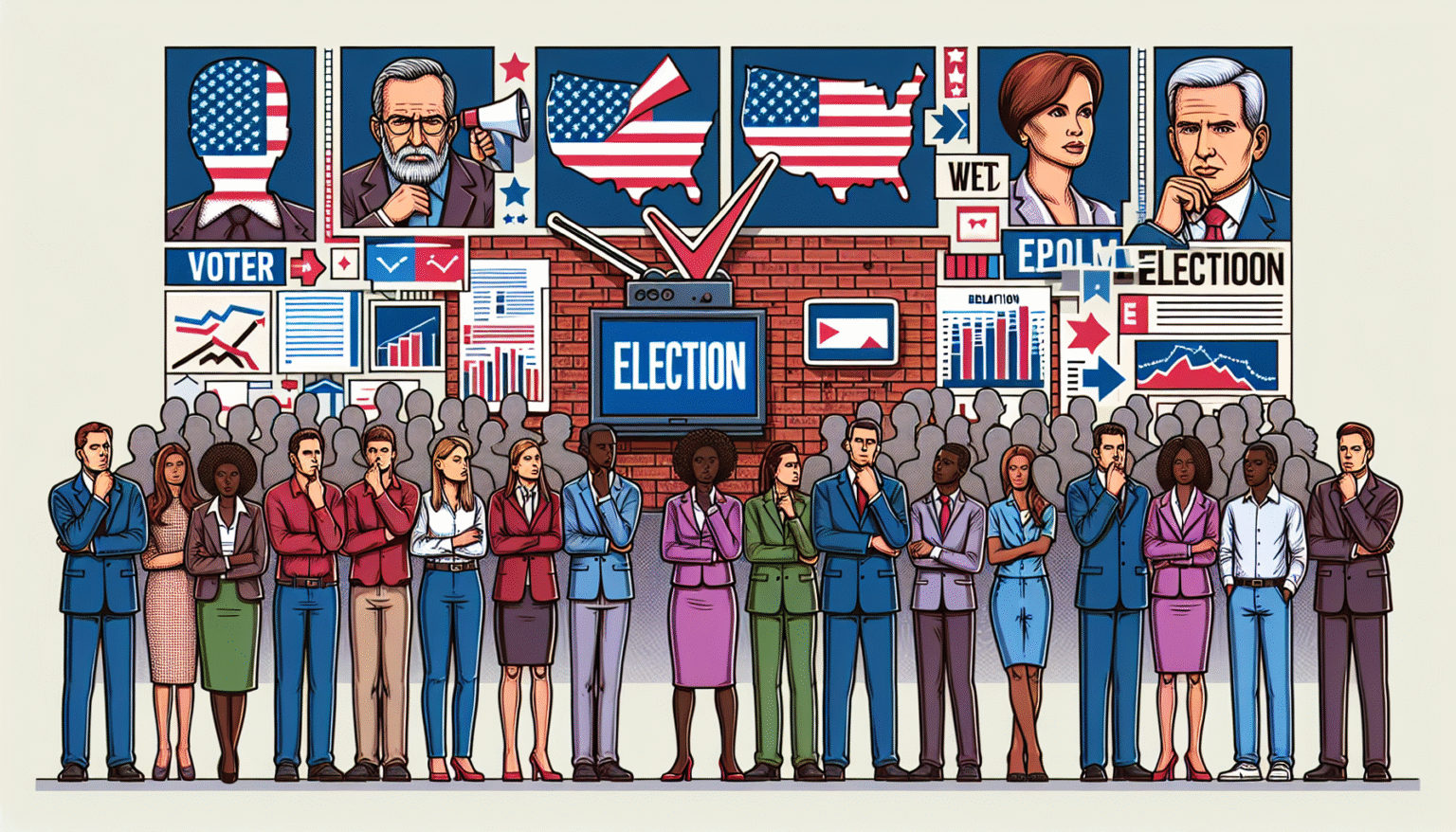Understanding Political Campaigns and Voter Perception
Political campaigns play a pivotal role in shaping voter perception. A well-executed campaign leverages various strategies to influence public opinion, persuade undecided voters, and solidify support among loyal constituents. Here, we explore the multifaceted ways in which these campaigns operate, the tools they employ, and the psychological principles that underlie voter behavior.
The Role of Messaging
Messaging is at the heart of any political campaign. Candidates craft narratives that resonate with their target audiences. By highlighting key issues such as healthcare, education, and the economy, campaigns can align their candidates with voter priorities. Successful messaging often utilizes emotionally charged language that triggers feelings of hope, fear, or urgency.
Framing is a strategic communication technique used to shape how issues are perceived. For instance, describing a policy as beneficial for “middle-class families” rather than “tax increases” can dramatically alter public response. Research indicates that the way information is presented influences decision-making processes, causing voters to accept or reject ideas based on framing alone.
The Importance of Targeting
Effective political campaigns utilize voter segmentation to tailor messages specifically for different demographics. By analyzing voter data, campaigns can identify key characteristics such as age, income, education, and voting history. This targeting allows candidates to craft specific messages that appeal to particular groups, enhancing their chances of gaining support.
Micro-targeting has become increasingly sophisticated, employing algorithms and data analytics to reach potential voters effectively. Campaigns use social media platforms like Facebook and Instagram to deliver different messages to different users, ensuring a personalized voter experience. Studies show that personalized messages are significantly more effective in eliciting a favorable response compared to generic advertisements.
The Influence of Media
Media plays an influential role in shaping voter perceptions. Campaigns strategically engage with traditional media outlets, like television and newspapers, as well as digital platforms. This multifaceted approach ensures broad coverage and creates a narrative that can influence public discourse.
Positive and Negative Advertising: One of the traditional tools of political campaigns is advertising, which can be both positive and negative. Positive ads tend to focus on the candidate’s strengths, accomplishments, and vision, while negative ads highlight opponents’ failings and vulnerabilities. Research has shown that negative advertising can be more impactful as it captures viewers’ attention and can create doubt about an opponent’s capabilities.
Social Media’s Impact
In recent decades, the rise of social media has revolutionized political campaigning. Platforms such as Twitter, Facebook, and TikTok allow candidates to interact directly with voters, bypassing traditional media filters. This interaction can lead to greater engagement and a sense of community among supporters.
One significant aspect of social media’s influence is the concept of virality. Memes, hashtags, and viral posts can spread quickly, allowing campaigns to shape narratives in real-time. Social media also fosters echo chambers, where people are exposed primarily to information that reinforces their existing beliefs, further polarizing voter opinions. The ability to share and comment on political content can amplify messages and alter perceptions on a massive scale.
The Role of Endorsements and Influencers
Endorsements from respected figures can carry significant weight in shaping voter perception. When a candidate receives an endorsement from a well-known politician, celebrity, or community leader, it often lends them credibility and increases public trust. Voter perception is heavily influenced by associating positive qualities of the endorser with the candidate.
Influencers on social media further amplify this trend. Political influencers utilize their platforms to advocate for certain candidates or issues, often engaging younger voters who may be disinclined to participate in traditional political discourse. This demographic shift can be a game-changer in electoral outcomes, as campaigns increasingly seek to engage voters through influencers that resonate with younger audiences.
Emotional Resonance in Campaigning
The psychological aspects of campaigning cannot be understated. Political campaigns often leverage emotional appeals to sway voter perception. The use of storytelling can evoke empathy and inspire action. By sharing personal anecdotes or testimonials, candidates can create an emotional connection with voters.
Fear-based tactics are another common strategy, where campaigns highlight potential negative consequences of not supporting their candidate. While such strategies can be effective, they must be used judiciously, as excessive fear-mongering can lead to backlash and alienation among voters.
The Effectiveness of Ground Campaigns
Ground campaigns, which include door-to-door canvassing, phone banking, and direct voter outreach, are critical in influencing voter perception. Personal interactions create opportunities for candidates and their supporters to present their messages authentically. Face-to-face engagement fosters a sense of connection and trust that impersonal advertising often lacks.
Ground campaigns often target swing states and districts, focusing resources where they can have the most significant impact. Research has shown that personal outreach from volunteers can effectively sway undecided voters, amplifying the emotional connection created through direct engagement.
The Role of Polling and Feedback
Polling is an essential tool that campaigns use to gauge voter sentiment and adjust strategies accordingly. Continuous feedback from polls allows campaigns to reconfigure their messaging and target demographic focuses in real-time, ensuring they remain aligned with voter feelings and concerns.
However, campaigns must balance reliance on polling with authentic voter engagement. Overemphasis on polling can lead to an echo chamber effect if campaigns strictly follow trends rather than focusing on substantive issues that matter to voters.
The Ethics of Campaign Tactics
The methods employed in shaping voter perceptions often raise ethical questions. Responsible campaigns must navigate the fine line between persuasion and manipulation. Misleading information, deepfakes, and voter suppression tactics have increasingly entered the political landscape, undermining the democratic process.
Voters today are becoming more discerning, seeking transparency and accuracy. Campaigns that prioritize ethical communication and uphold integrity are more likely to foster lasting relationships with constituents compared to those that resort to deception or negativity.
The Continuous Evolution of Campaign Strategies
Political campaigns are dynamic, continually evolving in response to technological advancements and shifts in societal norms. As public platforms change, so too must the strategies employed to influence voter perception. The rise of AI and machine learning, for instance, promises to change how voter data is analyzed and utilized, refining targeting and message personalization even further.
Conclusion
Political campaigns significantly shape voter perception through strategic messaging, media engagement, and emotional appeals. Understanding these dynamics can equip voters with the insight necessary to navigate the complexities of political communication. As political campaigns continue to evolve, the principles that drive voter behavior will remain essential for crafting effective strategies in the evolving electoral landscape.






